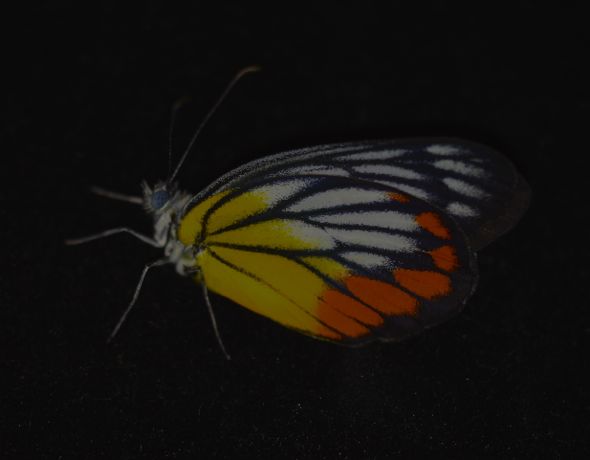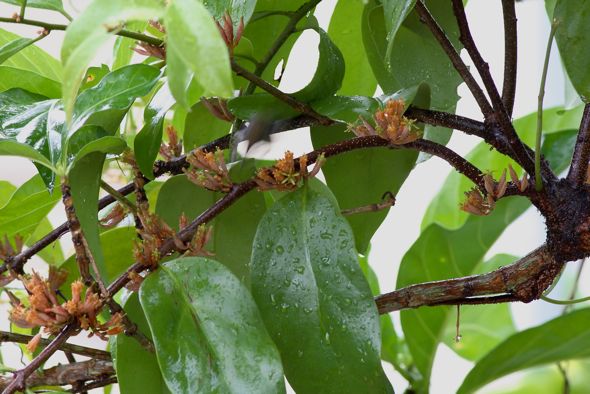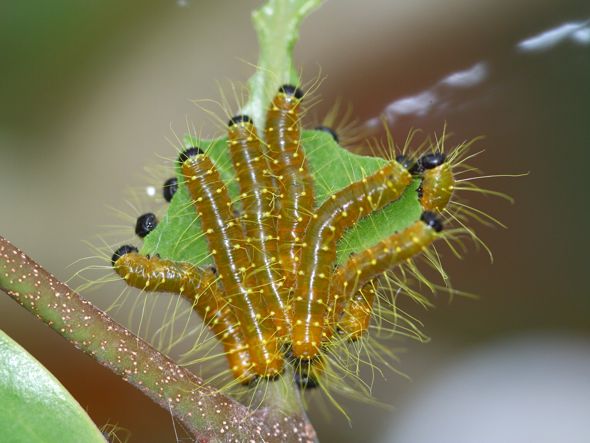The Painted Jezebel (Delias hyparete metarete) is an attractive common butterfly (above). Its host plant is the Malayan Mistletoe (Dendrophthoe pentandra) (below). This semi-parasitic plant grows on the branches of many other plants.
The butterfly lays a clutch of tiny eggs on the undersurface of the leaves (below).
Once the eggs hatch, the tiny caterpillars start feeding on the leaf that the eggs were laid. Generally the eggs hatch more or less together such that all the caterpillars are of the same size. In this instance the caterpillars were of significantly different sizes, probably due to hatching at different times.
The video below shows close up of a caterpillar chewing the leaf of the mistletoe plant from the leaf edge.
YC Wee
Singapore
April 2015




![PaintedJezebel-eggs [wyc]](https://besgroup.org/wp-content/uploads/PaintedJezebel-eggs-wyc2.jpg)







